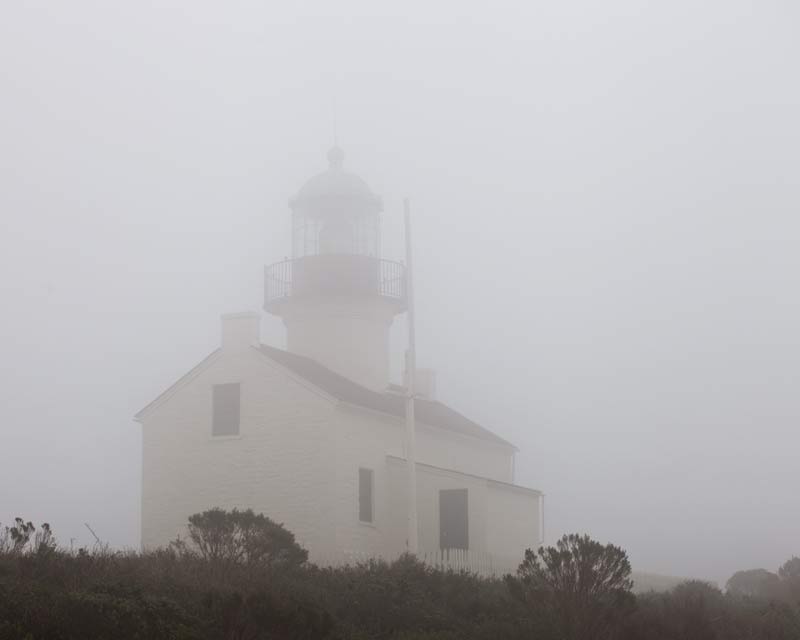 NPS Photo/Bill Griswold - The Old Point Loma Lighthouse obscured by fog.
NPS Photo/Bill Griswold - The Old Point Loma Lighthouse obscured by fog.At dusk on November 15, 1855, the light keeper climbed that winding staircase and lit the light for the first time.
The Old Point Loma Lighthouse stood watch over the entrance to San Diego Bay for 36 years. But why was it taken out of service? The Old Point Loma Lighthouse was built on what seemed to be a good location 422 feet above sea level, however, there was one serious flaw – FOG.
Fog and low clouds often prevented the visibility of the light. If you have ever been to the Point Loma Peninsula at dusk or dawn (and sometimes anywhere in between) you know that fog is abundant. As an air mass develops over the ocean, the atmospheric moisture grows. When that air is cooled to the point where it can no longer hold all of the water vapor in which it contains, fog is formed. More accurately fog forms when the difference between air temperature and dew point is less than 2.5 degrees Celsius. Therefore, on March 23, 1891, the light was extinguished and the light was moved to a new lighthouse location closer to the water at the tip of the Point.

NPS Photo/Bill Griswold - The light was extinguished in 1891 and moved to a new location due to consistent fog.
This reoccurring weather pattern may have spelled the end for the old lighthouse overlooking San Diego Bay, however it has many positive benefits to the other occupants of Point Loma, specifically our native plants and animals. San Diego is at the cusp between desert and arid classifications with between 9 – 11 inches of annual rainfall. To survive, these plants must gain moisture from other sources beyond rainfall. San Diego’s native plants have adapted to trap water vapor from the atmosphere. On foggy days, plants utilize their hair-like fibers, bumpy leaf texture, and other adaptations to collect water to last all summer. Water vapor from fog and low clouds also aid in the existence of amphibians, birds, and small mammals in this Mediterranean climate.
The next time you visit us at Cabrillo National Monument and the fog starts to roll in, keep in mind that fog has made both a significant historical and environmental impact on this entire community.